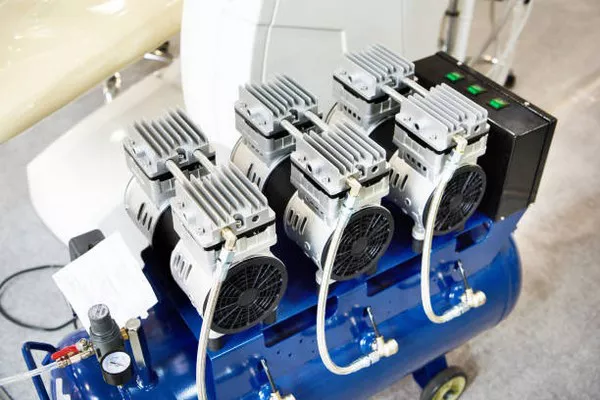Compressors play a crucial role in various industries, from manufacturing and construction to automotive and aerospace. These devices are essential for increasing the pressure of a gas to compress it into a smaller volume, making them indispensable in numerous applications. However, understanding the cost of compressors can be complex, as it depends on several factors. In this article, we delve into the intricacies of compressor pricing, exploring different types of compressors, factors influencing their costs, and strategies for making informed purchasing decisions.
Types of Compressors
Compressors come in various types, each designed for specific applications and operating conditions. Understanding the distinctions between these types is essential for determining their respective costs.
1. Reciprocating Compressors
Reciprocating compressors utilize pistons driven by a crankshaft to compress gas. They are commonly used in applications requiring relatively low flow rates and high pressures, such as refrigeration and small-scale air compression. These compressors are often more affordable upfront but may incur higher maintenance costs over their lifespan due to their intricate mechanical components.
2. Rotary Screw Compressors
Rotary screw compressors feature a pair of helical screws that compress gas as they rotate. They are preferred for applications demanding continuous and high-volume air or gas compression, such as industrial manufacturing and automotive assembly lines. While rotary screw compressors typically have higher initial costs compared to reciprocating compressors, they offer greater efficiency and reliability, potentially resulting in lower overall operational expenses.
3. Centrifugal Compressors
Centrifugal compressors utilize centrifugal force to accelerate gas and then convert its velocity into pressure. These compressors are well-suited for large-scale applications requiring high flow rates and moderate to high pressures, such as petrochemical processing and power generation. Centrifugal compressors tend to have the highest upfront costs among compressor types due to their complex design and sophisticated manufacturing processes.
4. Scroll Compressors
Scroll compressors employ orbiting and fixed scrolls to progressively compress gas. They are commonly used in residential and commercial HVAC systems, as well as in small-scale refrigeration units. While scroll compressors offer advantages in terms of compactness and quiet operation, they may have higher initial costs compared to reciprocating compressors but lower maintenance requirements.
Factors Influencing Compressor Costs
Several factors contribute to the overall cost of compressors, ranging from technical specifications to market dynamics and operational considerations. Understanding these factors is crucial for evaluating the cost-effectiveness of different compressor options.
1. Capacity and Performance
The capacity and performance of a compressor, including its maximum flow rate, pressure range, and efficiency, significantly influence its cost. Compressors designed for high-capacity and high-pressure applications typically command higher prices due to their advanced engineering and construction materials.
2. Quality and Reliability
The quality and reliability of a compressor play a pivotal role in determining its cost. Compressors manufactured by reputable brands with a track record of reliability and durability may come at a premium price. However, investing in a high-quality compressor upfront can often result in lower long-term costs associated with maintenance, repairs, and downtime.
3. Energy Efficiency
Energy efficiency is becoming an increasingly important consideration in compressor selection, driven by environmental regulations and rising energy costs. Compressors with higher energy efficiency ratings may have higher initial costs but can deliver significant savings in energy consumption over their operational lifespan, making them a cost-effective choice in the long run.
4. Installation and Maintenance
The installation and maintenance requirements of a compressor can impact its overall cost of ownership. Factors such as ease of installation, accessibility for servicing, and availability of spare parts can influence the total cost incurred throughout the compressor’s lifespan. Additionally, ongoing maintenance costs, including lubricants, filters, and periodic inspections, should be factored into the purchasing decision.
Making Informed Purchasing Decisions
Given the multitude of factors influencing compressor costs, making informed purchasing decisions requires careful consideration and evaluation of various options.
1. Assessing Application Requirements
Begin by thoroughly assessing the specific requirements of the application for which the compressor will be used. Consider factors such as required flow rate, operating pressure, duty cycle, and environmental conditions to determine the most suitable compressor type and capacity.
2. Evaluating Total Cost of Ownership
Instead of focusing solely on upfront costs, take a holistic approach by evaluating the total cost of ownership over the compressor’s lifespan. Factor in not only the initial purchase price but also ongoing operational expenses, maintenance costs, energy consumption, and potential downtime costs.
3. Researching Available Options
Research the available compressor options thoroughly, considering factors such as brand reputation, product reviews, and technical specifications. Engage with manufacturers, distributors, and industry experts to gather insights and recommendations tailored to your specific needs.
4. Considering Financing and Warranty Options
Explore financing options and warranty coverage offered by compressor manufacturers or distributors. Many companies provide flexible financing plans and extended warranty packages that can help mitigate upfront costs and provide peace of mind regarding long-term reliability and support.
See Also Where Does A Compressor Go In Pedal Chain
Conclusion
The cost of compressors varies significantly depending on factors such as type, capacity, quality, and energy efficiency. By understanding these factors and adopting a strategic approach to compressor selection, businesses can make informed purchasing decisions that optimize both upfront investments and long-term operational performance. Prioritizing quality, reliability, and energy efficiency can ultimately lead to cost savings and enhanced productivity in various industrial and commercial applications.

